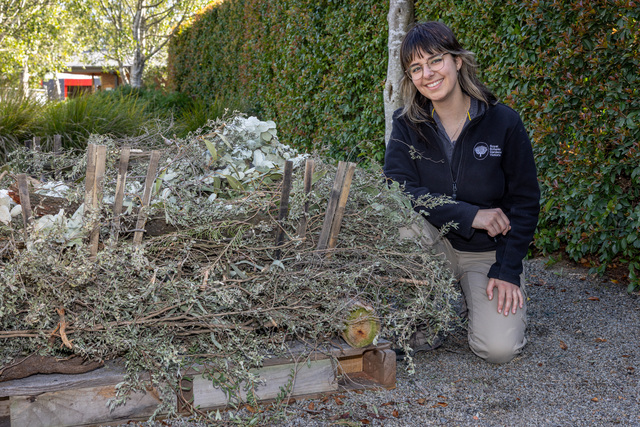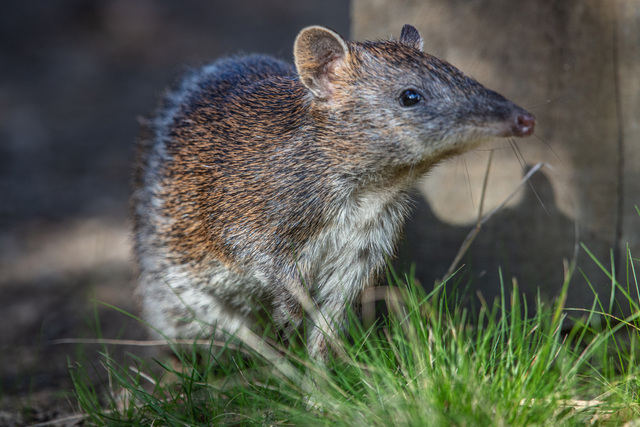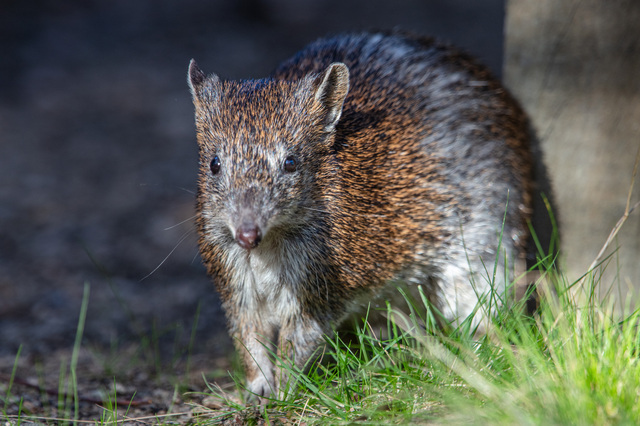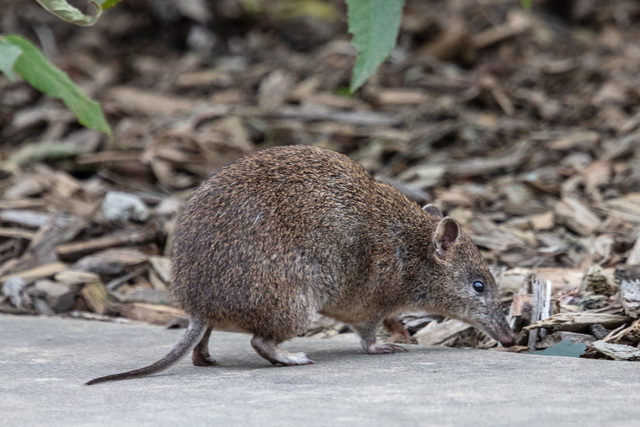A new trial at the Royal Botanic Gardens Cranbourne is giving Southern Brown Bandicoots a safe place to hide.
Southern Brown Bandicoot outreach officer Eilish Roberts said the program is testing different structures that could serve as temporary refuges for the endangered marsupials, which have lost much of their natural habitat to urban development.
The Gardens team has now installed five different shelter designs, from a biodegradable cone-like structure by the company ReHabitat, which decomposes after a year, to tile-based and wooden shelters, and cages filled with native vegetation.
Cameras will monitor how the bandicoots interact with each option through spring.
“We know that Southern Brown Bandicoots have used what’s called a ‘bandicoot bungalow’ before, which is essentially like a pallet with two entrances, covered in foliage. We’ve seen that they will go into those and use them,” Ms Roberts said.
“But we don’t really have a lot of information on what they actually like and what’s useful for bandicoots.
“We’ve got five different options for them now out in the garden, and we’ll be monitoring them with cameras. We’re just going to observe them over the next period to see if they show any preferences for certain structures.”
Ms Roberts said the goal isn’t to replace natural habitat, but to provide a quick refuge in areas where vegetation cover is sparse.
“They’ve lost so much habitat,” she said.
“We’re not expecting them to necessarily use it as a nest or anything.
“It’s more just to get a little bit of safety if there is a roaming fox or a roaming cat, and there is no immediate vegetation to jump into.”
The trial is one of the few in Australia investigating bandicoot shelter preferences. “There’s just not enough research on their preferences,” Ms Roberts said.
“I wish I could give you a reason. I think we have a really unique opportunity at the Gardens to put that to the test because, probably, one of the reasons is that there aren’t a lot of bandicoots around. It’s hard to test these things.
“But we have the perfect case study where we’ve got bandicoots at the Gardens, and we can just observe what they prefer.”
The Gardens’ population of Southern Brown Bandicoots fluctuates between 100 and 300, depending on seasonal conditions.
Drought has likely pushed numbers down recently.
Beyond the shelter trial, protection efforts include maintaining the site’s predator-proof fence, monitoring population health, and working with the State Government to establish wildlife corridors linking the Gardens to nearby Botanic Ridge.
Apart from the efforts from the Gardens, Ms Roberts is urging the local community to plant native vegetation such as Lomandra and tussock grass, which are essential cover for nesting bandicoots.
“Ultimately, they need more strappy native plants. We really hope that more people will plant,” she said.
“Because they lack habitats, these shelters could be a supplement that helps them.
“We don’t want people to only build things and not actually end up planting because habitats are the main thing that they need.”










